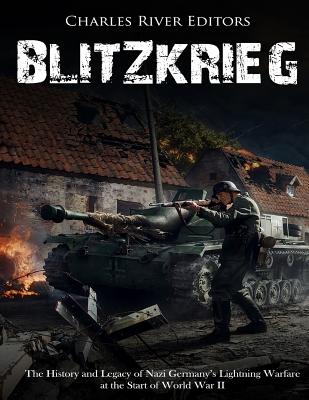You are here
Back to topBlitzkrieg: The History and Legacy of Nazi Germany's Lightning Warfare at the Start of World War II (Paperback)
Email or call for price
Description
*Includes pictures
*Includes online resources and a bibliography for further reading
"In this year, 1929, I became convinced that tanks working on their own or in conjunction with infantry could never achieve decisive importance. My historical studies, the exercises carried out in England and our own experience with mock-ups had persuaded me that the tanks would never be able to produce their full effect until the other weapons on whose support they must inevitably rely were brought up to their standard of speed and of cross-country performance. In such formation of all arms, the tanks must play primary role, the other weapons beings subordinated to the requirements of the armour. It would be wrong to include tanks in infantry divisions; what was needed were armoured divisions which would include all the supporting arms needed to allow the tanks to fight with full effect." - Heinz Guderian
War has always been a competition between defense and offense. At times these two have been relatively balanced, but at other times, one becomes far more powerful. It is during those times that the greatest military innovations occur.
The tank was first developed by the British and French during World War I as a means to break the deadlock on the Western Front. More so than any previous war, the balance of power lay with the defense, as machine guns, trenches, bunkers, barbed wire, and rapid-firing rifles all made frontal assaults on established positions prohibitively costly. In the closing months of the war, the tank partially evened up that balance, even as the war's commanders initially proved unsure of how to use them. While it cannot be said that the tank won the war, it contributed to its end and if the fighting had continued another year, the mass production that had started in Allied countries may have proved decisive.
World War II was thus the culmination of a quarter century of tank development, and it would also be the first major test of tanks in mobile warfare, during which they had to face other tanks. However, many of the tanks were constructed with the static warfare of the Western Front in mind and were thus slow and had short operational ranges. Others were too light to face opposing tanks or the new generation of anti-tank weapons that hadn't existed in World War I. The unsuitability of these tank models for this new kind of warfare was quickly recognized, and the belligerent powers scrambled to create better designs. As each new, improved model came off the assembly lines, the opposing powers rushed to create a tank that could beat it. In that regard, World War II was also a war between rival engineers.
At the same time, German military officials were at the forefront of developing new ideologies when it came to utilizing their tanks to maximum effect. Heinz Guderian even published a book on the topic before becoming one of the Third Reich's most effective tank commanders. Moreover, during the German invasion of Poland, Nazi forces gained experience they would use across Europe and in Russia. After all, it was in Poland that the Wehrmacht saw action for the first time, conducting what was not only an invasion but also a trial run of its new equipment and tactics. The Polish invasion proved invaluable in providing the German high command with a low-risk, high-value live fire exercise for their newly minted war machine, while the actual combat experience highlighted the remaining flaws in the system. During the campaign, the Germans honed tactics and weapon systems for the massive struggle with the Soviets, British, and United States that loomed on the horizon.
Blitzkrieg: The History and Legacy of Nazi Germany's Lightning Warfare at the Start of World War II looks at the development of the tanks and the doctrine that revolutionized tank warfare. Along with pictures of important people, places, and events, you will learn about blitzkrieg like never before.

